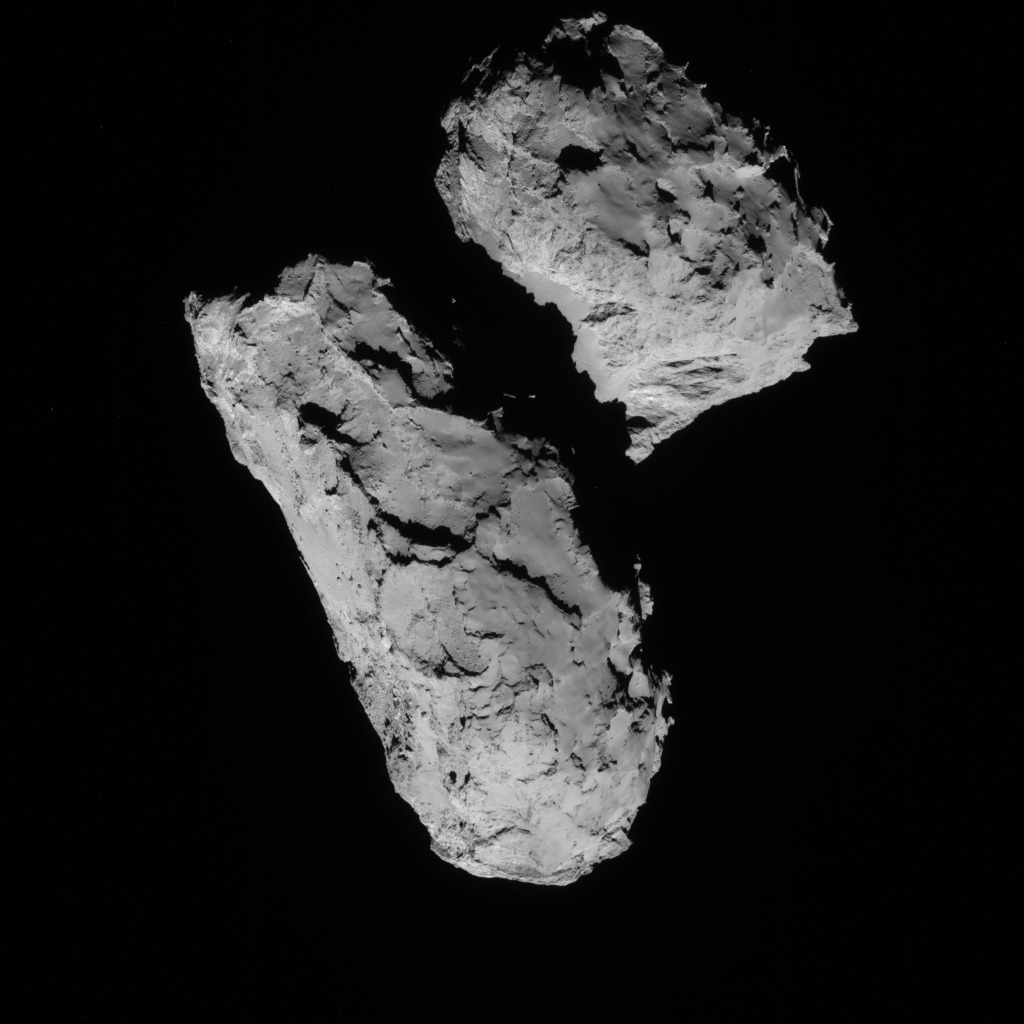Rosetta navigation camera (NAVCAM) image taken on 21 August 2014 at a distance of about 69 km from comet 67P/C-G.
CometWatch – 21 August
- access_time 22/08/2014
- chat_bubble_outline 19 comments
Written by
Claudia
Claudia is an astronomer and science writer working for ESA.
access_time
22 August 2014
chat_bubble_outline
19 comments
format_list_bulleted
Ambition the film

Click image to watch Ambition
Read Rosetta: the ambition to turn science fiction into science fact
Mission milestones
| Event | Date |
| Launch | 2 Mar 2004 |
| Earth swingby | 4 Mar 2005 |
| Mars swingby | 25 Feb 2007 |
| ... more | |









Discussion: 19 comments
Impressive and sad, we can see the reality to millions of kilometers, but we are unable to see what happens around to our…
Short sighted is as short sighted does…one gains by looking past things.
You sir aren’t making any sense.
The body of the duck
is a chunk of outer layers
Since tetrahedral orbits I have had great difficulty to identify something as not comet material. Anyone?
I am truly sorry to abandon following.
wishes the best.
this is too much blurring and cut an paste.
science is not
when only 1 or 2 teams
can test allegations.
Is anyone going to make any sense today?
I wonder if Rosetta’s original target, Wirtanen, would of been so interesting and diverse . I have my doubts… and we haven’t seen it all yet! Some of the comet’s features look like they came straight from a 1950’s Sci-fi movie…
Any views yet on whether it’s two comets or one?
Talking about relativity. Here we are facing a giant leap of humanity showing real human beings able to place a lander on a 2.5 miles piece of comet, flying at a speed of 35,000 miles per hour. And it took 10 years to reach this rock. What is not being said is the tremendous knowledge and organizational capabilities behind this accomplishment. All technicians and people behind this project are silent human heroes who deserve the very best of our recognition and admiration.
Very well put, Alfredo. I am amazed at what ESA has been able to do already with the Rosetta program. I can’t wait for the out gassing to begin as it approaches the Sun.
looking at these pictures with amazement and when reading the text and can’t begin to imagine the math behind all this. So I sit back and enjoy. What would be great is if on some of these pictures you could overlay familiar objects to put the size of/on the comet into perspective. For example, on the comet, depending on resolution and distance overlay aerial shots of a town or house, any object that gives us an idea how big things are on the image we see.
It should be easy enough to use a scale ruler against the image and see the relative size against the ruler, knowing the size of a house then work out how big it would look on the Comet! Simples.
Without doubt it is a big object and would cover the whole of the center of London. Encompassing an area 4.5 by 2.5 km should give you some measure of size.
The fact that we are seeing it so far away and that it is the first detailed close up of a live Comet is enough for me as I doubt that anymore projects will take place in my lifetime.
CliveEPs edowni
“…would cover the whole of the center of London”. Thanks Clive. That already gives me a good idea. Now imagine an overlay of this on the image of the comet. Would be stunning to see (and would make this thing look really menacing). I can imagine once the pictures of closer up come in that an overlay of other familiar objects would be really illustrative. It’s just a suggestion.
Are the smooth plains the result of out gassing from previous trips around the Sun.
Are we seeing ‘stuff’ that didn’t quite make it to freedom the last time because of collisions between two or three other vents.
Are those particals now settled back on the surface awaiting their fate as it were?
All this will become clearer when 67P/C-G starts to fizz!
Dirty snowball? Can’t see any ice – must be conveniently hidden under the rocky crust. If it looks like planetesque rock, it is most likely to be just that. Maybe the Rosetta mission will finally change the current thinking on comet composition? Or maybe just create a new exception to ill-conceived theories.
This somehow reminds me of the lunar landing.
Ten years of work to reach this goal is fantastic.
I guess we all are looking forward to see if the landing goes well.
Good job
The shadow of the rock is strange (below on the right of the neck)